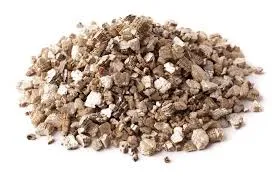Jan . 01, 2025 00:54 Back to list
Thermal Insulation Solutions for Pipe Manufacturers and Their Applications
Thermal Insulation Materials for Piping A Manufacturer’s Perspective
Thermal insulation plays a crucial role in various industries, particularly in piping systems, where temperature control is essential for safe and efficient operations. Manufacturers of thermal insulation materials are tasked with developing solutions that not only prevent heat loss but also improve energy efficiency, minimize condensation, and enhance overall system performance. This article delves into the types of thermal insulation materials available for piping and the factors manufacturers must consider in their production processes.
Types of Thermal Insulation Materials
1. Fiberglass Insulation One of the most commonly used materials, fiberglass insulation is lightweight, non-combustible, and offers excellent thermal performance. It is often used in both commercial and industrial piping applications due to its cost-effectiveness and ease of installation. Fiberglass insulation can withstand temperatures ranging from -20°F to 1000°F, making it versatile for various applications.
2. Foam Insulation Polyurethane and polystyrene foams are popular choices for thermal insulation. These materials offer high R-values, which indicate their effectiveness in resisting heat flow. Foam insulation is particularly beneficial for pipes that carry hot fluids, as it reduces heat loss significantly. Manufacturers often choose foam insulation for its lightweight nature and ability to conform to irregular shapes.
3. Mineral Wool Also known as rock wool or slag wool, mineral wool is made from natural or synthetic fibers. This material is highly resistant to fire and provides excellent sound dampening properties in addition to thermal insulation. It is typically used in high-temperature applications and is suitable for steam or hot water piping.
4. Silica Aerogel Known for its remarkable thermal insulation properties, silica aerogel is one of the lightest solids known, making it an outstanding choice for applications where space is at a premium. Its high-performance insulating capabilities allow manufacturers to produce thinner insulation systems without compromising effectiveness.
5. Reflective Insulation Mainly used in regions with hot climates, reflective insulation works by reflecting radiant heat away from the piping. These materials often consist of a layer of aluminum foil and are effective when combined with traditional insulation.
Factors Influencing Material Selection
thermal insulation materials for piping manufacturers

Manufacturers must consider several critical factors when producing thermal insulation materials for piping
- Temperature Range The insulation material must withstand the operating temperatures of the fluids being transported. This includes both extremes of hot and cold applications.
- Moisture Resistance Pipes are often exposed to varying humidity levels. Insulation materials should resist moisture absorption to prevent deterioration and mold growth.
- Fire Safety Compliance with fire safety standards is essential, especially in industrial settings. Manufacturers need to ensure their materials meet local and international fire safety regulations.
- Environmental Impact With growing concerns about sustainability, many manufacturers are exploring eco-friendly materials and production methods. The choice of raw materials and the lifecycle of the insulation material play a significant role in its environmental footprint.
- Cost-Effectiveness While performance is critical, manufacturers also need to consider the cost of materials and installation. Balancing quality with affordability is essential in meeting market demands.
Conclusion
As industries continue to evolve and seek more efficient ways to manage energy usage, the role of thermal insulation materials for piping becomes increasingly significant. Manufacturers are challenged to produce innovative, high-performance solutions that address diverse needs while keeping sustainability and safety in mind. By understanding the various types of insulation materials available and the factors influencing their selection, manufacturers can better cater to the unique requirements of their clients, ultimately contributing to more efficient and reliable piping systems.
-
Fe-C Composite Pellets for BOF: Enhance Steelmaking Efficiency
NewsAug.07,2025
-
Eco-Friendly Granule Covering Agent | Dust & Caking Control
NewsAug.06,2025
-
Fe-C Composite Pellets for BOF: High-Efficiency & Cost-Saving
NewsAug.05,2025
-
Premium Tundish Covering Agents Exporters | High Purity
NewsAug.04,2025
-
Fe-C Composite Pellets for BOF | Efficient & Economical
NewsAug.03,2025
-
Top Tundish Covering Agent Exporters | Premium Quality Solutions
NewsAug.02,2025
